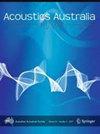Prediction of Aerodynamic Noise of a Traction Induction Motor Using Methods of Computational Fluid Dynamics and Lighthill Acoustic Analogy
Abstract
Traction induction motors (TIMs) are widely used in electrically powered railway vehicles. TIMs can generate significant noise during operation, which has become one of the primary noise sources for railway vehicles. In this paper, a purposely designed experiment was conducted to characterize the acoustic performance of a TIM based on the comparison of speed up and power off conditions. It was found that aerodynamic noise was dominant at speeds higher than 3000 r/min (3000 rotations per minute) and the main component of the aerodynamic noise was the 48th order (48 times the rotation frequency), which was related to the 48 conductors in the air-gap. To simulate the aerodynamic noise of the TIM, a computational fluid dynamics model was developed to calculate the flow field of the TIM. Lighthill acoustic analogy was then applied to calculate the noise due to the acoustic sources induced by the flow. Compared to the method with Ffowcs Williams–Hawkings acoustic analogy, the proposed method improved the accuracy in predicting the aerodynamic noise, and allowed to quantify the contribution to the aerodynamic noise of TIMs from a variety of acoustic excitation sources. The results showed that the excitation sources adjacent to the rotational air gap contributed the most to the motor’s aerodynamic noise. The proposed method was proven to be an efficient approach for optimal design of the TIM aerodynamic noise by identifying the main excitation sources and offered valuable insights for prediction of aerodynamic noise of other types of induction motors.

 求助内容:
求助内容: 应助结果提醒方式:
应助结果提醒方式:


